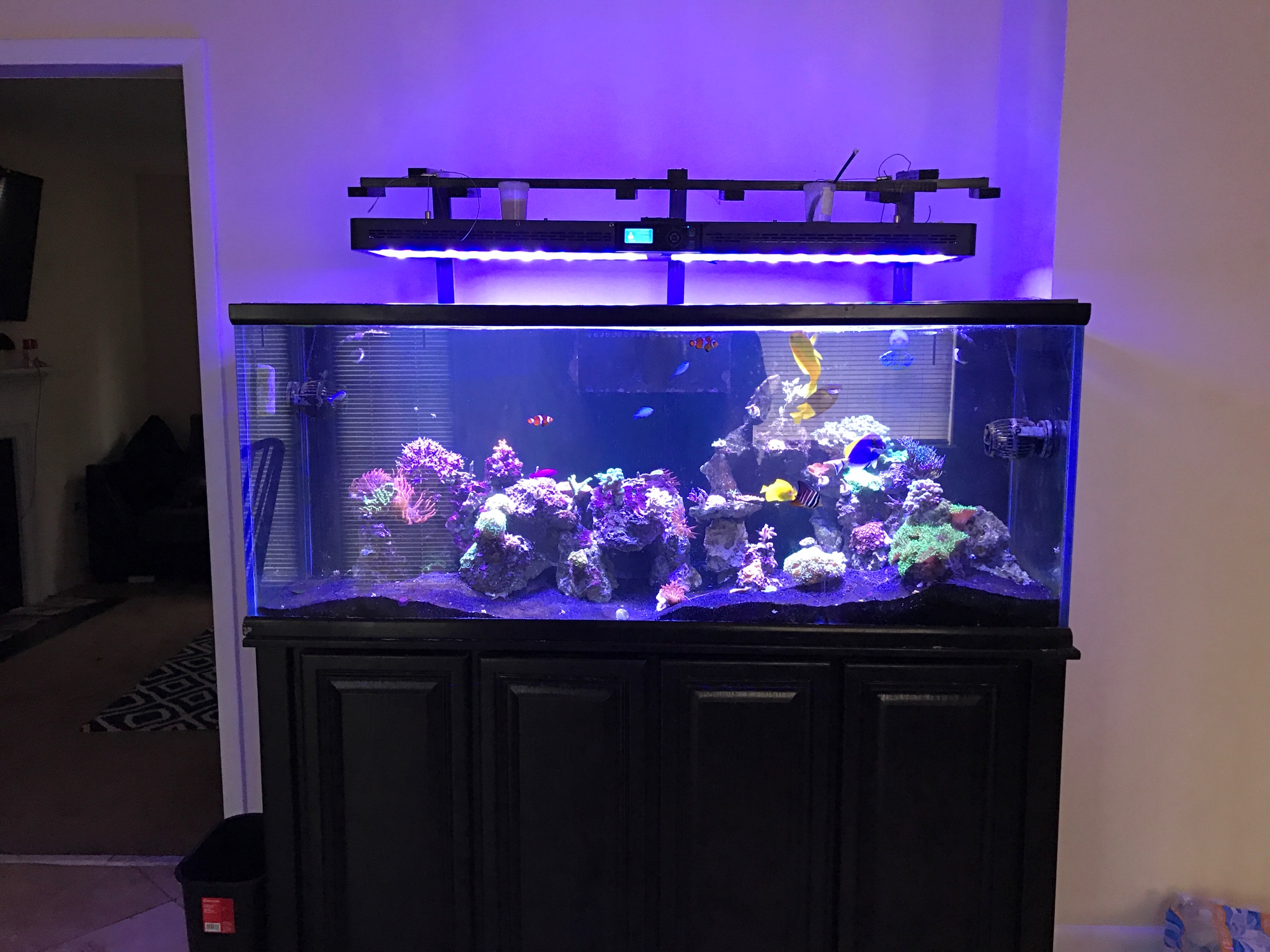- Joined
- May 5, 2016
- Messages
- 127
- Reaction score
- 89
Hey all,
I have been contemplating swapping out the sand in my reef tank for a while now and as of late, I am a little more apt to do it. I currently have black sand in my tank and it was really cool at first but, it makes the tank seem really dark and drab. The corals do pop off of the black but the tank overall is sort of dark and gloomy. Depending on the feedback I get, I will look into putting white sand or crushed coral in.
My concerns:
1. Nutrients. The tank has been up for about 8 months. I have never really siphoned the sand consistently so I am sure there is detritus and other uglies trapped in the sand bed. How can I go about removing the sand without causing a major spike in NO2,NO3, and PO4.
2. I set this tank up in a hurry as I was moving and the timing didn't allow for careful planning. In doing so, I set my rocks up on the sand bed instead of the bottom glass. I would like to go back and put eggcrate under the rock structures to aid stability.
Many of my rock structures do not have a lot of sand under them and if I can remember properly, I tried to push the rocks through the sand to the glass as much as possible but, I can't be certain.
My plan of action:
Over the course of weeks (6-8 weeks) I will siphon out sand in sections as I do my water changes until there is not much left. Then, over the next 6-8 weeks I will add new sand to the tank. As i go, I will attempt to lift the rocks just enough to wiggle some egg crate under each structure to add stability.
I am not 100% sold on doing this as the black sand isn't ruining the tank for me but, it's a novelty that I have lost interest in and would love to go back to the bright and beautiful white sand. I want to hear opinions on this as I could go either way.
Thanks guys and gals.
I have been contemplating swapping out the sand in my reef tank for a while now and as of late, I am a little more apt to do it. I currently have black sand in my tank and it was really cool at first but, it makes the tank seem really dark and drab. The corals do pop off of the black but the tank overall is sort of dark and gloomy. Depending on the feedback I get, I will look into putting white sand or crushed coral in.
My concerns:
1. Nutrients. The tank has been up for about 8 months. I have never really siphoned the sand consistently so I am sure there is detritus and other uglies trapped in the sand bed. How can I go about removing the sand without causing a major spike in NO2,NO3, and PO4.
2. I set this tank up in a hurry as I was moving and the timing didn't allow for careful planning. In doing so, I set my rocks up on the sand bed instead of the bottom glass. I would like to go back and put eggcrate under the rock structures to aid stability.
Many of my rock structures do not have a lot of sand under them and if I can remember properly, I tried to push the rocks through the sand to the glass as much as possible but, I can't be certain.
My plan of action:
Over the course of weeks (6-8 weeks) I will siphon out sand in sections as I do my water changes until there is not much left. Then, over the next 6-8 weeks I will add new sand to the tank. As i go, I will attempt to lift the rocks just enough to wiggle some egg crate under each structure to add stability.
I am not 100% sold on doing this as the black sand isn't ruining the tank for me but, it's a novelty that I have lost interest in and would love to go back to the bright and beautiful white sand. I want to hear opinions on this as I could go either way.
Thanks guys and gals.















